by Lisa Cooke | Nov 12, 2015 | 01 What's New, Records & databases, Research Skills, YouTube
Get inspired in Genealogy Gems Premium Podcast episode 129! You’ll hear about church records and YouTube for genealogy, locating hard-to-find records and–even 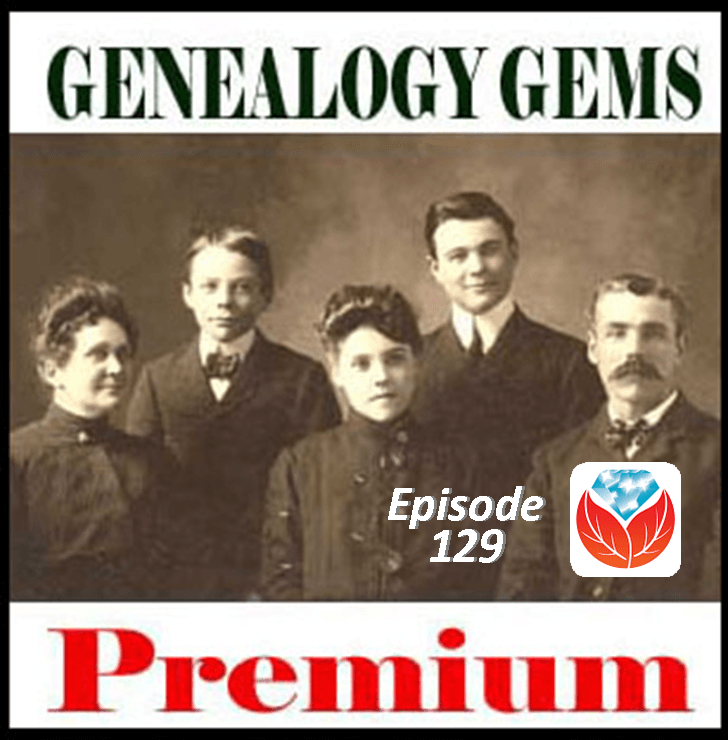 better–locating ancestors’ parents.
better–locating ancestors’ parents.
How many ways can you think of to find family history? Lisa Louise Cooke can think of a lot–and she packs as many of them as possible into the newly-published Genealogy Gems Premium Podcast episode #129.
In this members-only podcast, Lisa starts off with a rundown of some great new genealogy records online. I particularly enjoyed the back story she shares on the 1939 Register recently released by Findmypast for England and Wales.
Then Lisa tackles a tough two-part question that a listener sent in. We follow along with this listener’s progress in trying to track down an elusive record type. Spoiler alert: it doesn’t pan out. (Sound familiar?) So then it’s back to the drawing board with some follow-up Genealogy Gems advice and great feedback from yet another listener! I love how this show segment shows the inside process of multi-step research problems.
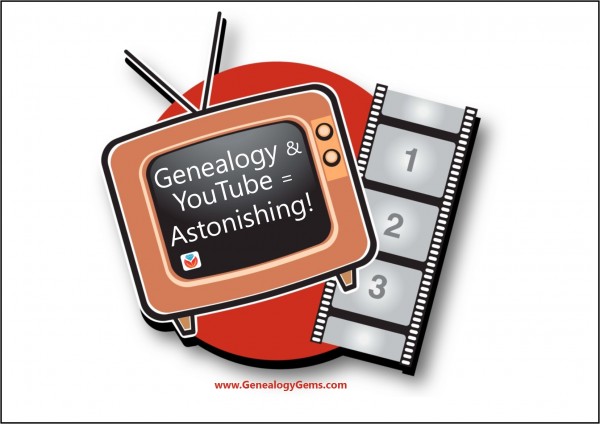 A segment on YouTube for family history follows. Lisa is so great at figuring out how to use everyday buy adhd medication online technologies and online resources for family history, and YouTube is no exception. I admit I was a bit skeptical the first time I read about searching YouTube for ancestors in Lisa’s book, The Genealogist’s Google Toolbox, but I have since found some amazing things on YouTube. Don’t miss these tips!
A segment on YouTube for family history follows. Lisa is so great at figuring out how to use everyday buy adhd medication online technologies and online resources for family history, and YouTube is no exception. I admit I was a bit skeptical the first time I read about searching YouTube for ancestors in Lisa’s book, The Genealogist’s Google Toolbox, but I have since found some amazing things on YouTube. Don’t miss these tips!
Two guests join the show today. First is an exclusive Gems interview 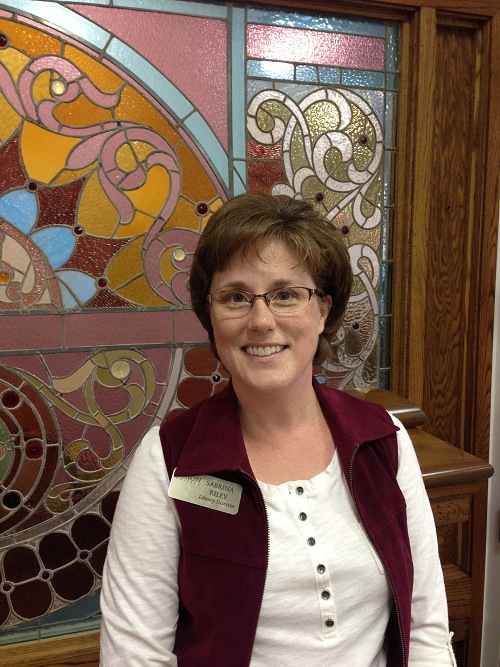 with Sabrina Riley, a Library Director at Union College. Sabrina oversees an archive of Seventh-Day Adventist church records and gives us great tips on using these (and other denominational records) for genealogy.
with Sabrina Riley, a Library Director at Union College. Sabrina oversees an archive of Seventh-Day Adventist church records and gives us great tips on using these (and other denominational records) for genealogy.
Then Diahan Southard chimes in with an insightful DNA commentary on when our DNA circles don’t necessarily result in family connections.
 What a great lineup! If you’re a Genealogy Gems Premium website member, sign in and then click here and start listening. If you’re not, click here to learn more about the benefits of Genealogy Gems Premium membership. Listening to this exclusive podcast episode is just ONE of MANY benefits you’ll receive for an entire year!
What a great lineup! If you’re a Genealogy Gems Premium website member, sign in and then click here and start listening. If you’re not, click here to learn more about the benefits of Genealogy Gems Premium membership. Listening to this exclusive podcast episode is just ONE of MANY benefits you’ll receive for an entire year!
by Lisa Cooke | Mar 24, 2015 | 01 What's New, History, images, Maps, United States

Mapping Migration in the United States. From the New York Times. Click to go straight to the source!
The U.S. has long been typified as a nation of restless wanderers. Are we still? Well, it depends on where in the U.S. you are from.
A new interactive infographic on the New York Times website looks at U.S. migration patterns: where residents of each U.S. state in 1900, 1950 and 2012 were born. According to the accompanying article, “You can trace the rise of migrant and immigrant populations all along the Southwest, particularly in Texas and Arizona, the influx of New Yorkers and other Northeasterners into Florida starting in the 1970s; and the growth in the Southern share of the Illinois population during the Great Migration.”
“In 1900, 95 percent of the people living in the Carolinas were born there, with similarly high numbers all through the Southeast. More than a hundred years later, those percentages are nearly cut in half. Taken individually, each state tells its own story, and each makes for fascinating reading.”
If you live in the U.S. now, click on your state to zoom in. You’ll see the statistics more fully represented. How many natives of that state still live there? Where else are its residents from? Where do you fall in? I am one of less than 1% of Ohioans who was born in a western state (excluding California). My husband and children are among the 75% of Ohio natives who still live here.
It might surprise you how little–or how much –your fellow state residents have been on the move. Now turn back the clock by clicking on the 1900 or 1950 maps. How did your family fit the norms for the time?
 If you love learning history through maps, go to our Home page and click on the Maps category in the lower left under Select Content by Topic. You’ll find lots more great online map resources and plenty of great map research strategies.
If you love learning history through maps, go to our Home page and click on the Maps category in the lower left under Select Content by Topic. You’ll find lots more great online map resources and plenty of great map research strategies.
by Lisa Cooke | Apr 24, 2015 | 01 What's New, British, Church, images, Military, Records & databases, United States
 Every Friday, we highlight new genealogy records online. Scan these posts for content that may include your ancestors. Use these records to inspire your search for similar records elsewhere. Always check our Google tips at the end of each list: they are custom-crafted each week to give YOU one more tool in your genealogy toolbox.
Every Friday, we highlight new genealogy records online. Scan these posts for content that may include your ancestors. Use these records to inspire your search for similar records elsewhere. Always check our Google tips at the end of each list: they are custom-crafted each week to give YOU one more tool in your genealogy toolbox.
This week:
ALABAMA COUNTY MARRIAGES. Over 700,000 names have been added to FamilySearch’s index of Alabama county marriage records (1809-1950). Some of the index entries have images.
ENGLAND PARISH RECORDS. Indexes to baptisms, marriages and burials from Derbyshire (1538-1910) and images of original records of Yorkshire baptisms, bishop’s transcripts of baptisms, marriage banns, marriages, bishop’s transcripts of marriages, burials and bishop’s transcripts of burials (1500s-19oos, dates vary) are now searchable on FindMyPast.
IOWA HISTORICAL JOURNALS. The State Historical Society of Iowa has posted back issues of The Annals of Iowa dating to 1863. This is a quarterly, peer-reviewed historical journal. Use the search box to see whether your Iowa ancestors, hometowns or other family connections (schools, churches, friends, etc) are mentioned in more than 150 years’ worth of articles.
RUSSIAN WWII SOLDIERS. According to this article, “Thanks to a new online state initiative, families of Russian WWII combatants…are now able to give their forebears the recognition they deserve, 70 years on. The Zvyezdy Pobedy project, organized by the Rossiyskaya Gazeta newspaper, allows the descendants of those who fought in the Red Army in WWII to find out whether their ancestors were among the recipients of over 38 million orders and medals awarded during the war….There are more than 8,200 names listed in the database, which can be read in Russian at rg.ru/zvezdy_pobedy.”
U.S. CIVIL WAR RECORDS. These aren’t new, necessarily, but until April 30, Civil War records on Fold3 are FREE to search! Among the 43 million items are (of course!) military records, personal accounts, historic writings, photographs and maps. Both Union and Confederate records are represented.

Google tip of the week: Need to read web text in Russian or another language you don’t know? Use Google Translate to translate short passages or even entire webpages! Copy text or a URL (for full page translation) into the left box, then click English and Translate on the right. You can even play back an audio version of the foreign text to hear how it sounds! Learn more in Lisa Louise Cooke’s The Genealogist’s Google Toolbox. The 2nd edition, newly published in 2015, is fully revised and updated with the best Google has to offer–which is a LOT.
by Lisa Cooke | Mar 31, 2015 | 01 What's New, Google, Google Earth, Maps
It may not help with genealogy, but Google Maps just got a lot more fun!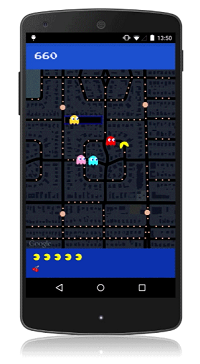
Yep, it’s PAC-Maps, and with this latest update you can find where NOT to go! Google has added imagery of “dangerous virtual beings, starting with Pinky, Blinky, Inky and Clyde. When navigating fruit-filled streets, determine at a glance which turns to pass to evade ghosts and get where you’re going safely. When you’re feeling a bit peckish, you can simply gobble up a few pac-dots or a cherry and keep on nommin’.”
I’m a little embarrassed to say how many hours I spent playing PAC-MAN in high school. Back then we had to hunch over a machine located next to the bathrooms at the local pizza parlor. Now you can take a break from your brick walls and walka walka walka around the world from the comfort of your desk. With PAC-Maps you can navigate select locations using the left, right, up or down arrows on your keyboard. Below is a screen shot from the desktop version:

Actually, PAC-MAN isn’t new to Googlers. Back on May 21, 2010 (yep, it’s official, I’m a Google geek) Google’s home page featured a desktop version that you can still play here.
 When you’re ready to head back to your genealogy brick wall, take my new book with you. The Genealogist’s Google Toolbox Second Edition makes Googling for your family tree easier than every!
When you’re ready to head back to your genealogy brick wall, take my new book with you. The Genealogist’s Google Toolbox Second Edition makes Googling for your family tree easier than every!
by Lisa Cooke | May 11, 2015 | 01 What's New, DNA, images, Records & databases, Technology
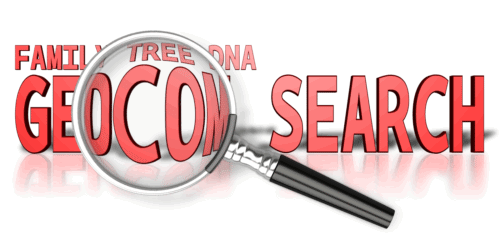 Family Tree DNA (FTDNA) has some of my very favorite genetic tools to help you make connections with your DNA matches when you can’t immediately find a genealogical connection, but it’s no secret that their genealogy tools leave much to be desired. However, their latest genealogy tool has promise: if certain conditions are met, you will be able to see whether any descendant of one of your ancestors has taken a DNA test!
Family Tree DNA (FTDNA) has some of my very favorite genetic tools to help you make connections with your DNA matches when you can’t immediately find a genealogical connection, but it’s no secret that their genealogy tools leave much to be desired. However, their latest genealogy tool has promise: if certain conditions are met, you will be able to see whether any descendant of one of your ancestors has taken a DNA test!
For quite some time now FTDNA has allowed you to enter your genealogical surnames and locations into your account and list your earliest known paternal and maternal line ancestors. The latter is displayed for your YDNA and mtDNA matches to see and the former for your autosomal DNA matches to see. As a bonus, if one of your autosomal matches shares an inputted surname, FTDNA will bold that surname (or location) for you in the “Ancestral Surnames” column of your match page.
A few months ago they upgraded their pedigree tool for uploading a GEDCOM into your account. This GEDCOM does not in any way interact with your DNA match list or results; it is just provided as a resource to your matches. The pedigree tool itself is clumsy at best, but at least it is searchable and can give you a head start when looking for matches. It would be really nice if FTDNA could scrape all the surnames and locations from your GEDCOM and use that to populate your Ancestral Surnames field, but it does not.
The latest addition to FTDNA’s mediocre genealogy offerings is the ability to search all of the uploaded pedigree information in the FTDNA database. The best part about this feature is that it is not limited to searching just your DNA matches. This means you can see if any descendant of one of your ancestors has taken a DNA test! This is great news!
Of course, you see the immediate problem: if the cousin of interest hasn’t uploaded a GEDCOM, you still won’t be able to find them. And, of course, the usefulness of the information is completely dependent on other people’s genealogical sleuthing skills. But still, this can be a useful tool.
I tried using this tool to find out if there were other descendants of my ancestors Julia Pond and Austin Tilton who had tested. I have one DNA match who descends from this couple and I am fairly certain this is our connection. I wanted to see if there were others out there who were also descendants of this couple. I started with just a search for “Julia Pond” and got 37 results. I then used the advanced search feature to add her birth year “1821” and “Ohio.”
There were two matches. My family tree, and another belonging to Katie. It was frustrating that I couldn’t see right away if Katie was also a DNA match. But in the Advanced search I can ask to see only DNA matches, and repeat the search. Katie disappeared. By doing this I learned that Katie is descendant of Julia and Austin, but she and I don’t share enough DNA to be considered related. This makes sense, since descendants of this couple would be my 4th cousins at best, and I know that I will only genetically match about half of my fourth cousins. I can now contact my DNA match that lists Julia and Austin on his pedigree and ask him if Katie shows up on his match list. Perhaps they share some DNA that I do not.
Speaking of that DNA match of mine: why wasn’t he listed in my search results for Julia Pond? Well, it turns out that in his pedigree she is listed as born in 1821 from OH, and my search said Ohio. Ah. The search function is not catching those kinds of differences. So be careful.
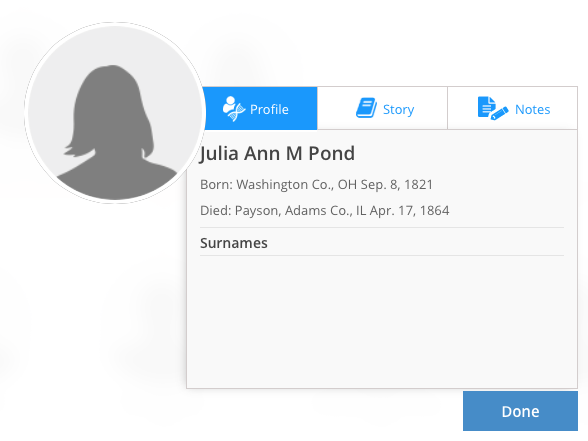
When implemented properly, this tool can help you collect all of the descendants of a particular ancestor so you can learn more about what DNA you inherited from whom, and further your genealogical efforts.
Are you ready to get started? If you’re new to genetic genealogy, the first thing to do is acknowledge you may face some unexpected discoveries. If you’re not willing to chance some surprises on your family tree, don’t pursue it yet. Next, evaluate FTDNA (or other DNA companies) for yourself. If you decide to get started, your first step should be to upload your own GEDCOM, and make it public. Don’t feel like you have to put everything you know in this GEDCOM, just what you are certain of and feel confident sharing. To make it public, go into your Account Settings, and agree to share your Basic Profile.
 After this Family Tree DNA review, if you’re ready to explore what DNA can do for YOUR genealogy, why not explore how I can help you do it? My quick guides on genetic genealogy include a guide specifically for those who test at Family Tree DNA.
After this Family Tree DNA review, if you’re ready to explore what DNA can do for YOUR genealogy, why not explore how I can help you do it? My quick guides on genetic genealogy include a guide specifically for those who test at Family Tree DNA.
You can also hire me for an individual consultation to make sure you’re doing the right DNA tests with the right relatives to answer your burning genealogy questions. (Testing the wrong people or DNA type can be a very expensive mistake!)
 better–locating ancestors’ parents.
better–locating ancestors’ parents. A segment on YouTube for family history follows. Lisa is so great at figuring out how to use everyday buy adhd medication online technologies and online resources for family history, and YouTube is no exception. I admit I was a bit skeptical the first time I read about searching YouTube for ancestors in Lisa’s book, The Genealogist’s Google Toolbox, but I have since found some amazing things on YouTube. Don’t miss these tips!
A segment on YouTube for family history follows. Lisa is so great at figuring out how to use everyday buy adhd medication online technologies and online resources for family history, and YouTube is no exception. I admit I was a bit skeptical the first time I read about searching YouTube for ancestors in Lisa’s book, The Genealogist’s Google Toolbox, but I have since found some amazing things on YouTube. Don’t miss these tips! with Sabrina Riley, a Library Director at Union College. Sabrina oversees an archive of Seventh-Day Adventist church records and gives us great tips on using these (and other denominational records) for genealogy.
with Sabrina Riley, a Library Director at Union College. Sabrina oversees an archive of Seventh-Day Adventist church records and gives us great tips on using these (and other denominational records) for genealogy. What a great lineup! If you’re a Genealogy Gems Premium website member, sign in and then click here and start listening. If you’re not, click here to learn more about the benefits of Genealogy Gems Premium membership. Listening to this exclusive podcast episode is just ONE of MANY benefits you’ll receive for an entire year!
What a great lineup! If you’re a Genealogy Gems Premium website member, sign in and then click here and start listening. If you’re not, click here to learn more about the benefits of Genealogy Gems Premium membership. Listening to this exclusive podcast episode is just ONE of MANY benefits you’ll receive for an entire year!









